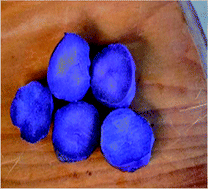The glycemic index of pigmented potatoes is related to their polyphenol content
Abstract
Polyphenol extracts from coloured fruits and vegetables inhibit α-glucosidase in vitro, however it is not known whether this translates into an attenuation of blood glucose response in vivo. We examined this relationship in a GI study by feeding coloured potatoes to 9 healthy volunteers. We also examined the in vitro inhibitory activity of potato anthocyanin extracts on rat intestinal α-glucosidase. Potatoes (Purple Majesty; Red-Y38; Yukon Gold and Snowden) were fed with skin after cooking in a convection oven, using a random block design and 50 g available carbohydrate. Glucose was used as the standard and venous blood collected at 0, 15, 30, 45, 60, 90, 120 min. Areas under the curve (AUC) for glucose and insulin were calculated, and GI and Insulin Index derived. Neither AUC for blood glucose response nor insulin was significantly different among the various potatoes studied. Although the mean GI (±SE) values for the potato types varied (purple = 77.0 ± 9.0; red = 78.0 ± 14.0; yellow = 81.0 ± 16.0; and white = 93.0 ± 17.0), these differences were not significantly different. The mean (±SE) polyphenol content (mg GAE/100 g DW) was 234 ± 28; 190 ± 15; 108 ± 39; 82 ± 1 for purple, red, yellow and white potatoes, respectively. There was a significant inverse correlation between polyphenol content and GI of the potatoes (r = −0.825; p < 0.05; n = 4). In vitro, polyphenol extracts of red and purple potatoes inhibited α-glucosidase by 37.4 ± 2.2% and 28.7 ± 3.2%, respectively. The GI of coloured potatoes is significantly related to their polyphenol content, possibly mediated through an inhibitory effect of anthocyanins on intestinal α-glucosidase.


 Please wait while we load your content...
Please wait while we load your content...